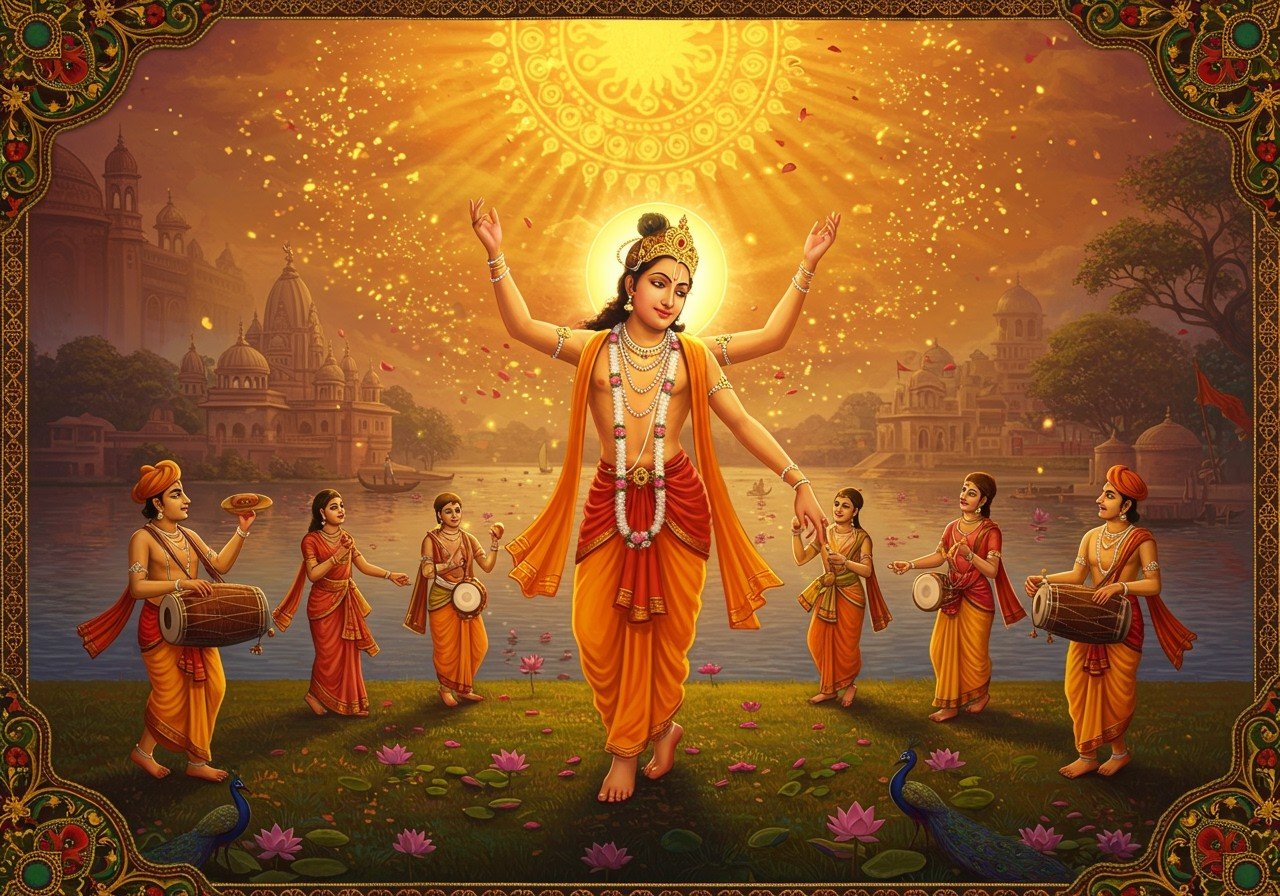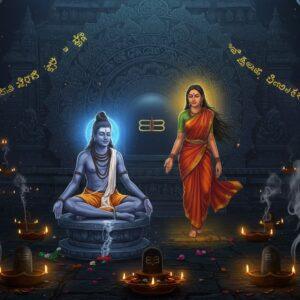
Immersing oneself in the spiritual wisdom of Chaitanya Mahaprabhu offers a glimpse into the transformative Bhakti Movement in India. His teachings and practices reshaped Hindu worship in the 16th century, leaving a lasting legacy. This exploration delves into Chaitanya Mahaprabhu’s life, cultural impact, and contributions to the Bhakti movement.
Historical Significance
Chaitanya Mahaprabhu, born in Nabadwip, Bengal in 1486, became a central figure in the Bhakti movement, revitalizing it during the 15th–16th centuries. He is revered by his followers as an incarnation of Lord Krishna and is recognized as the founder of Gaudiya Vaishnavism. This period in India faced social and political complexities. Religious movements, like the Bhakti movement, emerged as influential forces, addressing societal issues such as the rigid caste system. Born in Navadvipa, Bengal, Chaitanya experienced a profound spiritual awakening that transformed him into a revered spiritual leader. His extensive travels across India spread his message of love and devotion, inspiring numerous followers.
- Revival of the Bhakti Movement: Chaitanya Mahaprabhu played a pivotal role in reviving the Bhakti movement in India during the 15th and 16th centuries. His charismatic personality and profound teachings breathed new life into this devotional tradition, attracting people from all walks of life. He re-emphasized the importance of personal devotion over rigid rituals.
- Founder of Gaudiya Vaishnavism: He established Gaudiya Vaishnavism, a distinct branch of Vaishnavism centered around devotion to Krishna. This tradition emphasizes the emotional connection between the devotee and the divine, fostering a deep sense of love and surrender. Gaudiya Vaishnavism is characterized by its unique philosophical perspectives and practices.
- Social Reform: Chaitanya Mahaprabhu challenged the prevailing social norms by rejecting caste-based discrimination and rigid orthodoxy. He promoted equality and inclusivity in spiritual practice, emphasizing that divine love is accessible to all regardless of their social standing. His teachings were a beacon of hope for marginalized communities.
Core Teachings and Practices
Chaitanya Mahaprabhu’s teachings centered on love, devotion, and surrender to God. Sankirtana, the communal chanting and singing of holy names, played a vital role in his practices. His renowned ‘harinam sankirtan’ involved the collective chanting of divine names. He actively promoted inclusivity, transcending caste boundaries and emphasizing equality in spiritual practice.
- Emphasis on Love and Devotion: Chaitanya Mahaprabhu stressed the importance of unconditional love, surrender, and devotion to Krishna as the primary path to spiritual connection. He believed that true spiritual growth comes from cultivating a deep and personal relationship with the divine, going beyond mere ritualistic practices. His emphasis on emotional connection resonated deeply with his followers.
- Sankirtana Movement: Chaitanya Mahaprabhu popularized “Sankirtana,” the collective chanting of God’s holy names. He saw this practice as a powerful way to achieve spiritual unity and connect with the divine on a deeper level. Sankirtana fostered a sense of community and shared devotion among people from diverse backgrounds.
- The Hare Krishna Mantra: He promoted the chanting of the Hare Krishna mantra as a simple yet profound method for attaining spiritual enlightenment and liberation. This mantra is believed to have transformative power, connecting the chanter with the divine energy of Krishna. It is a central practice in Gaudiya Vaishnavism.
- Achintya Bheda Abheda: Chaitanya Mahaprabhu adhered to the Vedantic philosophy of Achintya Bheda Abheda, which describes the complex relationship between the creation and the creator. This doctrine seeks to reconcile seemingly contradictory perspectives of dualism and non-dualism, offering a nuanced understanding of the divine and its connection to the world.
Cultural Impact and Legacy
Chaitanya Mahaprabhu’s influence extended beyond the spiritual realm, impacting various cultural facets of Hindu society. His teachings have shaped regional art forms, literature, and music, particularly through devotional songs (bhajans) and dances. Festivals such as Gaura Purnima and Ratha Yatra enthusiastically commemorate his legacy throughout India. His teachings have inspired movements like the global Hare Krishna Movement.
- Inspiration to Poets and Musicians: Chaitanya Mahaprabhu’s teachings served as a muse for numerous poets and musicians. This inspiration led to the creation of a rich body of devotional literature and musical traditions, including Kirtan. His influence can be seen in the works of many prominent figures in Indian devotional music.
- Influence on ISKCON: Chaitanya Mahaprabhu’s message is now shared globally through the International Society for Krishna Consciousness (ISKCON). ISKCON plays a vital role in disseminating his teachings to a wider audience, making them accessible to people from various cultural backgrounds. The organization’s efforts have helped to establish his teachings as a significant force in contemporary spirituality.
- Emphasis on Divine Love: Chaitanya Mahaprabhu’s teachings highlighted divine love as the ultimate goal of human life. This focus inspired countless individuals to pursue a life centered on devotion and service to God. His emphasis on love as a transformative force continues to resonate with spiritual seekers today.
Chaitanya Mahaprabhu’s Role in the Bhakti Movement
Mahaprabhu played a pivotal role in revitalizing the Bhakti Movement. He shifted the focus from ritualistic practices to a more personal and emotional connection with the divine. His philosophical dialogues with contemporaries significantly influenced theological discourse. He established centers of learning and worship, such as the Jagannath Temple in Puri, transforming them into pilgrimage sites for devotees. His teachings helped bridge religious divides and foster unity among diverse communities.
The Art of Kirtan and Bhajan
Kirtan and bhajan are integral to Chaitanya Mahaprabhu’s spiritual practice. Music served as a powerful tool to enhance spiritual experiences and create a sense of community among devotees. Traditional kirtans and bhajans center around themes of devotion, love, and surrender to God. While these practices have evolved over time, incorporating regional languages and styles, their spiritual core remains intact.
Modern-Day Relevance
Chaitanya Mahaprabhu’s teachings remain remarkably relevant in the present day, resonating with many spiritual seekers. His emphasis on personal devotion and inclusivity continues to hold deep meaning for those seeking a path to inner peace and understanding. His principles offer a sense of unity in today’s often fragmented world.
How Poojn.in Supports Your Devotional Journey
Poojn.in offers a wide selection of products to support your Krishna bhakti and exploration of Chaitanya Mahaprabhu’s teachings. As India’s leading Dashakarma Bhandar, we provide authentic puja items connecting you with the rich traditions of the Bhakti movement. Find everything you need for a fulfilling devotional practice, all conveniently available at www.poojn.in.
For Krishna worship, we offer:
- Pure brass Krishna murtis
- Traditional tulsi malas
- Authentic ghanti (bells) for aarti
- Pure cotton vastras for deity decoration
- Sandalwood tilak
- Premium quality incense sticks
For Gaudiya Vaishnava practices:
- Complete puja thalis
- Pure copper water vessels
- Traditional clay diya sets
- Premium quality camphor
- Pure cotton wicks for aartis
Our products adhere to the highest standards of purity and authenticity, sourced directly from traditional artisans and manufacturers. Each item undergoes rigorous quality checks to ensure it meets religious requirements. We deliver across India, bringing authentic devotional items directly to your doorstep. Our dedicated customer service team provides expert guidance on product selection and proper usage according to tradition.
Embracing Mahaprabhu’s Legacy Today
Chaitanya Mahaprabhu’s teachings offer guidance and clarity for navigating life’s journey. His message of love and devotion resonates deeply, reminding us of the enduring strength of faith and unity. His impact transcends boundaries, touching hearts and minds from bustling cities to serene villages. We are part of a global community united in our pursuit of spiritual growth, embracing his principles. Whether through online platforms or vibrant celebrations, Mahaprabhu’s legacy continues to flourish, inviting us to experience the profound joy of devotion. Following his teachings allows us to connect with a rich heritage, cultivating a sense of belonging and inner peace. Let us carry forward his timeless wisdom.
FAQs on Chaitanya Mahaprabhu and the Bhakti Movement
Who was Chaitanya Mahaprabhu? Chaitanya Mahaprabhu, born in 1486, was a revered saint and a central figure in the 15th-century Bhakti Movement. He is renowned for spreading the message of love and devotion through song and dance, captivating hearts and inspiring spiritual awakening.
What is the Bhakti Movement? The Bhakti Movement was a transformative spiritual revolution that emphasized devotion to God as the path to salvation. It encouraged followers to express their love for God through various forms of worship, including singing, chanting, and communal gatherings.
What role did Chaitanya Mahaprabhu play in the Bhakti Movement? Chaitanya Mahaprabhu significantly invigorated the Bhakti Movement by popularizing Sankirtan, the practice of singing and dancing in praise of God. His teachings centered on love and devotion as the core of spiritual life, emphasizing the importance of a personal connection with the divine.
What is Sankirtan and why is it significant? Sankirtan is the practice of communal chanting and dancing in devotion to God. Chaitanya Mahaprabhu considered it the most effective way to connect with the divine and spread love and happiness among people, fostering a sense of unity and spiritual joy.


